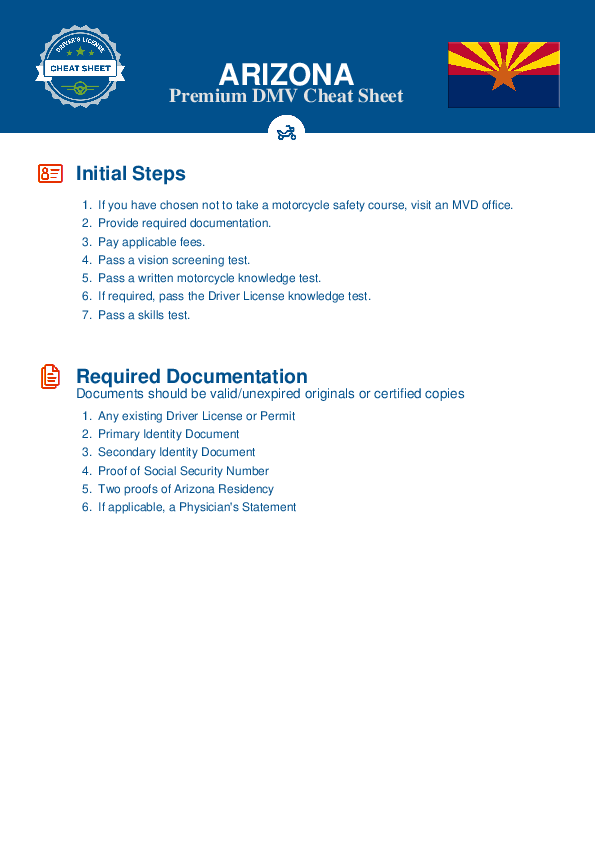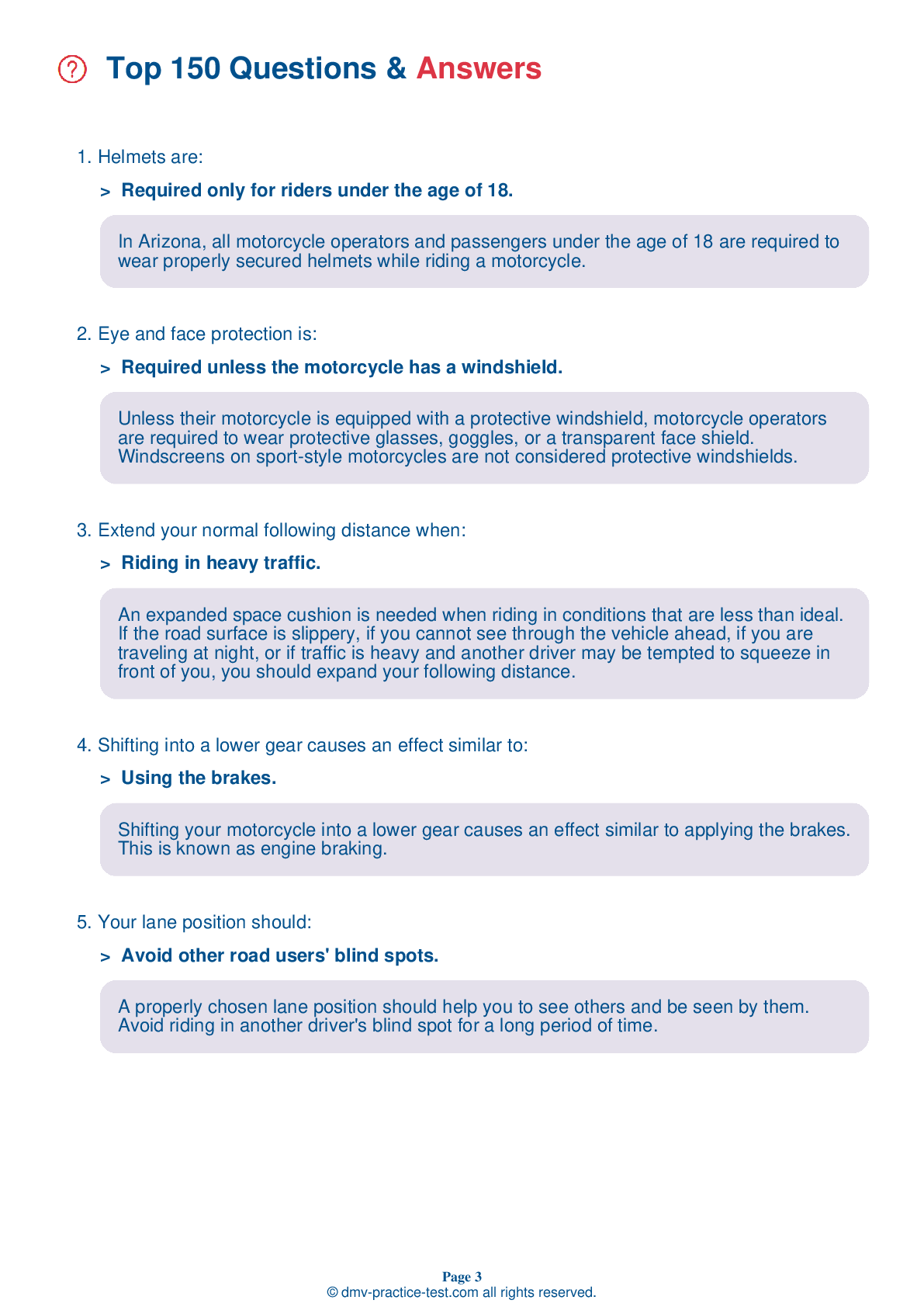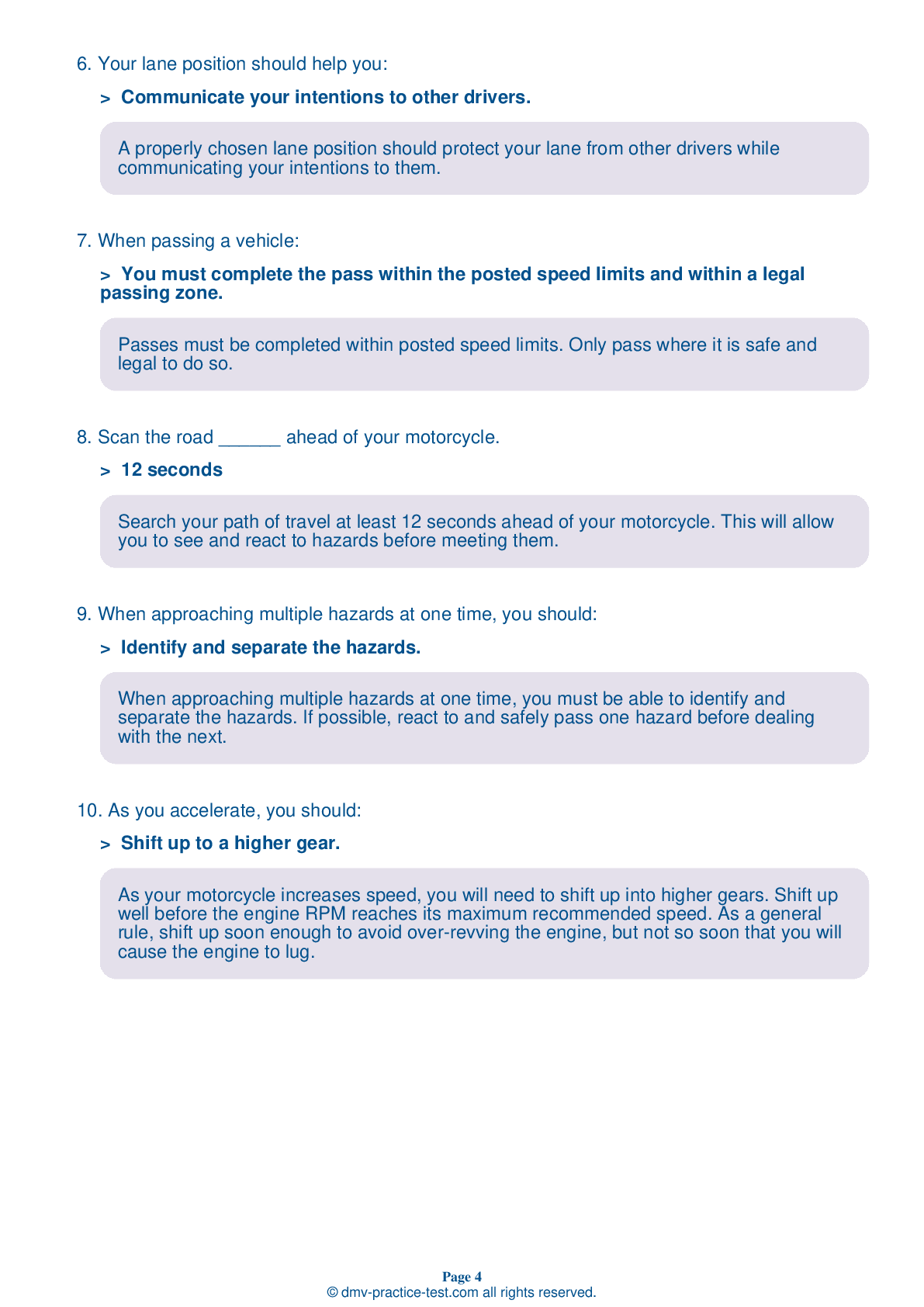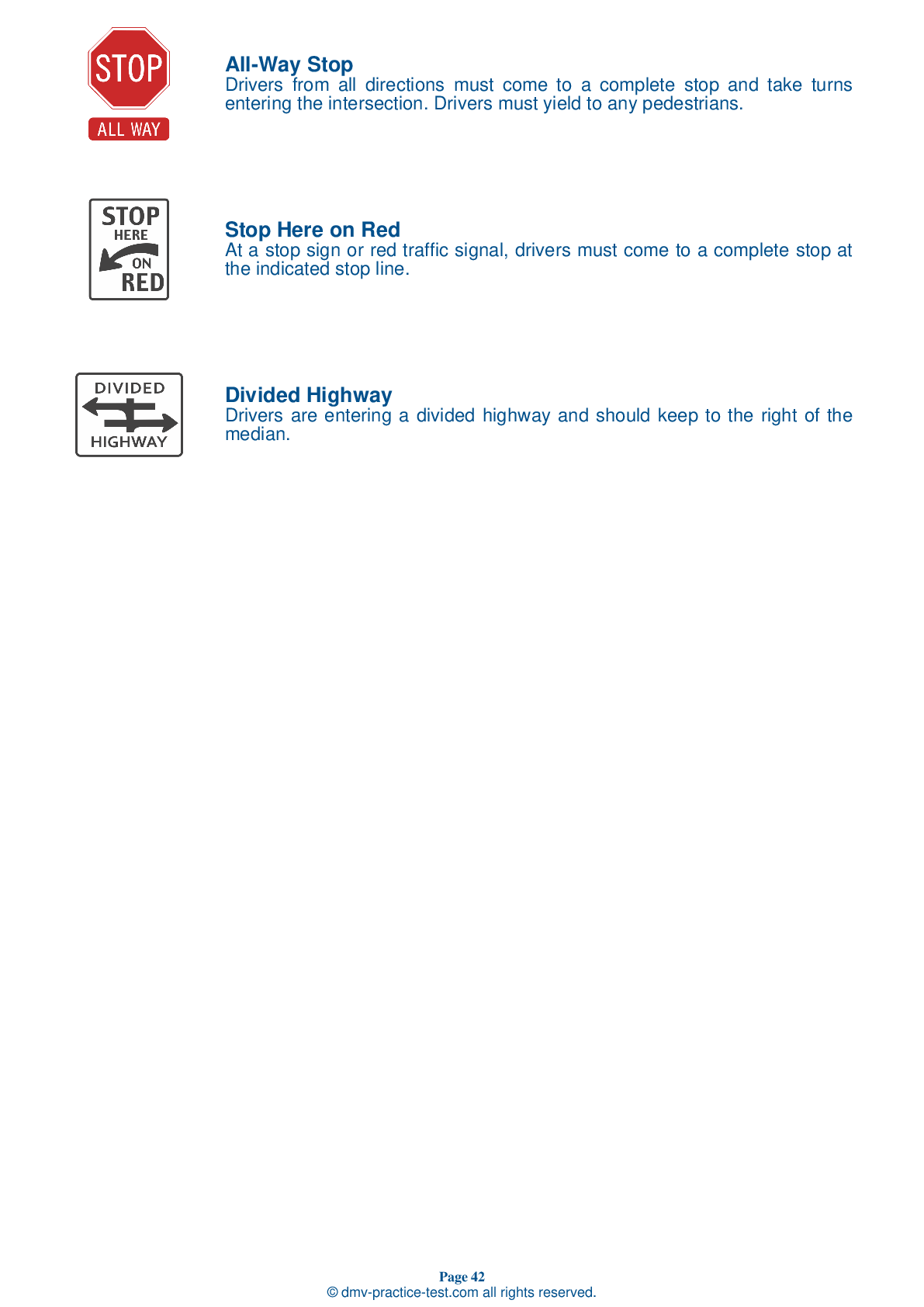Motorcycle Test | License AZ 2025 | FREE Online Practice! #5
Take this FREE motorcycle test (license in AZ 2025) to check your knowledge of the road rules. To improve your results, download a motorcycle handbook online, study theory, and practice for free on our website. Still worried about how to get a motorcycle license in Arizona in 2025? Check our website for more sample tests, train as much as possible, and boost your grades!
1 . More than half of all crashes:
More than half of all motorcycle crashes involve riders with less than six months of experience on the motorcycle being used.
2 . When planning a long group ride, which of the following ideas should not be implemented?
When riding in a group, the length of a route and the lengths of segments of travel should be based on the skill level of the least experienced rider. Groups of riders should take regular breaks to reduce fatigue. Inexperienced riders should be placed behind the leader so more experienced riders can keep an eye on them from behind. It is generally best to ride in a staggered formation.
3 . When carrying a passenger, a motorcyclist should tell the passenger to:
Even if your passenger is also a motorcyclist, you should give them complete safety instructions before leaving on a trip. Ask them to get on the motorcycle only after you have started the engine. They should sit as far forward as possible without crowding you and firmly hold onto your waist, hips, or belt. They should keep both feet on the footrests at all times, even when the bike is stopped.
4 . If your drive chain breaks, you:
If your chain breaks while you are riding, you will notice an instant loss of power to the rear wheel. Close the throttle and brake to a stop.
5 . This sign means:
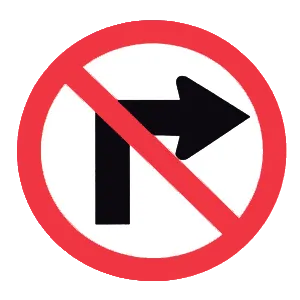
This sign indicates that right turns are prohibited. Do not make a right turn at an intersection where this sign is posted.
6 . To be effective, eye or face shield protection must be all of the following, except:
To be effective, an eye or face shield must be free of scratches; be resistant to penetration; allow clear views to both sides; fasten securely; permit air to pass through to prevent fogging; and allow room for eyeglasses or sunglasses, if needed.
7 . When crossing railroad tracks that are parallel to the road, you should:
To safely cross railroad tracks, trolley tracks, or pavement seams running parallel to your lane, move to a lane position that will allow you to cross them at an angle of at least 45 degrees. Then, make a quick, sharp turn. If you try to edge across, the tracks or seam could catch your tires and throw you off balance.
8 . The front brake is:
The front brake is safe to use as long as it is used properly. The front brake of a motorcycle is more powerful than the rear brake, providing at least three-fourths of the total stopping power.
See the exact questions that will be on the 2025 Arizona DMV exam.
99.2% of people who use the cheat sheet pass the FIRST TIME
Jeneen was tired of paying $5/gallon. She got herself a scooter that required the motorcycle license. She studyed the motorcycle test cheat sheet and passed her test the next day!
Christopher tells us how he knew nothing prior to obtaining the motorcycle study guide, and he only got one question wrong because he clicked on the wrong answer by mistake.
